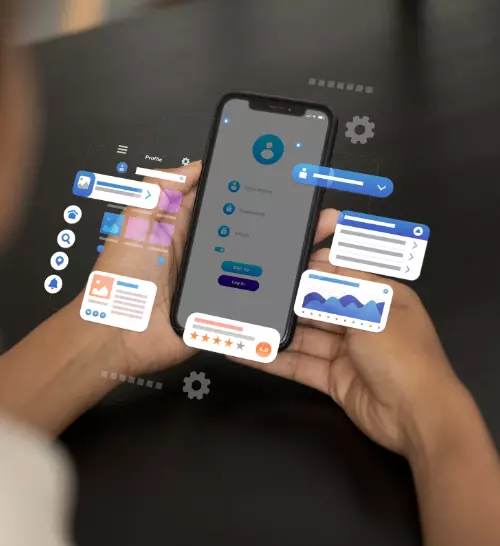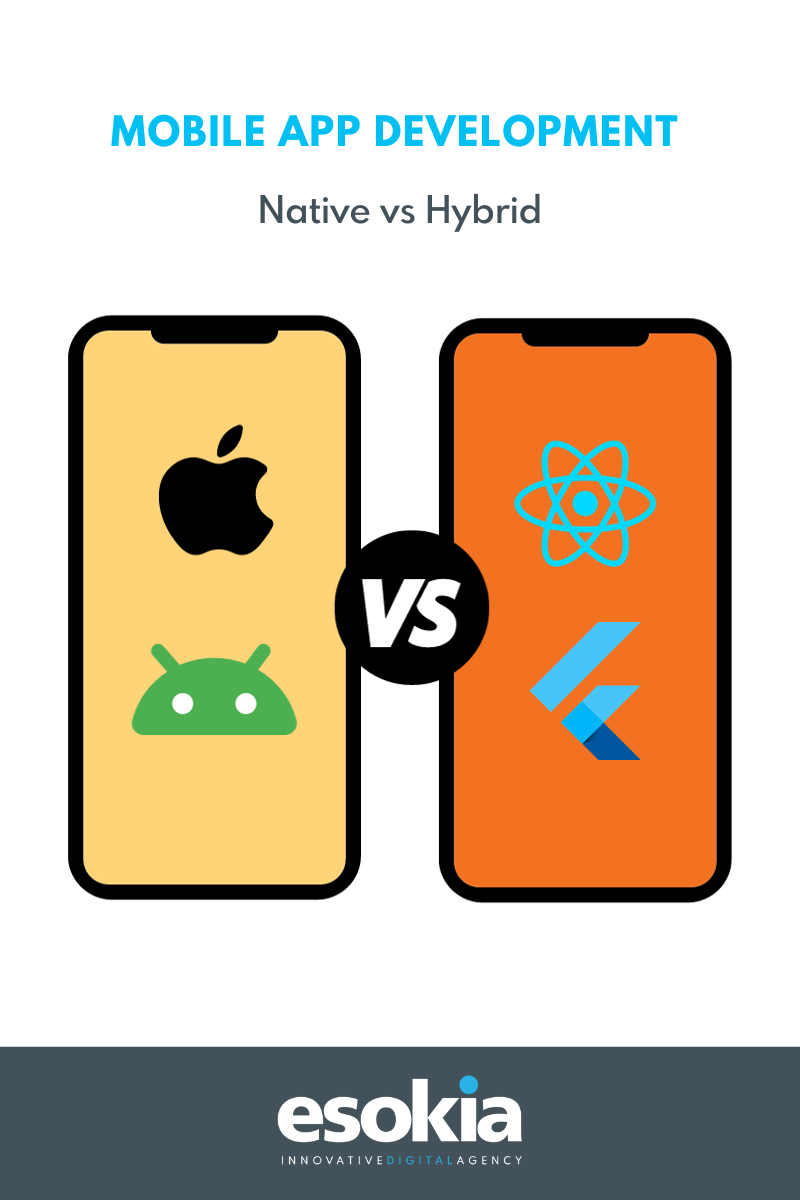
- Mobile app
Offshore mobile application development : How to create a mobile application while keeping your budget in check?

The choice between native vs hybrid development often depends on specific project objectives and preferred development workflow.
Each of these methods uses specific programming languages and offers unique advantages for application development.
Native development refers to the process of creating applications specific to a platform, such as Android or iOS, using the programming languages recommended by these platforms. For example, Java and Kotlin are commonly used for Android app development, while Swift is the programming language of choice for iOS apps. Native development is often preferred for its optimal performance and integration with operating system features.
Native development offers a superior user experience, as it takes full advantage of the platform's functionality. However, native development can be more costly and time-consuming than hybrid development, as it requires the creation of a separate application for each platform. In addition, native development requires expertise in several programming languages, which can increase development costs.
Native development also offers greater flexibility in terms of application functionality. With native development, developers can access all operating system functionalities, which is not always possible with hybrid development.
Hybrid development, on the other hand, refers to the process of creating applications that can be run on multiple platforms from a single source code. This is usually achieved by using standard web technologies, such as HTML, CSS and JavaScript, and wrapping them in a native shell that can be run on different platforms. Frameworks such as Ionic and React Native are commonly used for hybrid development.
The main advantage of hybrid development is that it enables an application to be developed for multiple platforms using a single source code. This can significantly reduce development costs and time-to-market. However, hybrid applications cannot offer the same performance or user experience as native applications, as they are not designed specifically for each platform.
Hybrid development also offers greater flexibility in terms of development workflow. With hybrid development, developers can use a single programming language to create applications for multiple platforms. This can simplify the development process and reduce costs. However, hybrid development may require compromises in terms of performance and access to platform-specific functionality.

In the field of application development, native applications are software specifically designed for a particular operating system. They are written in programming languages specific to these systems, such as Swift for iOS and Java for Android. These applications are optimized to take full advantage of the capabilities of the operating system and devices on which they are installed. Native development offers superior performance, better integration with system features and a smoother user experience than other types of application.
Native development is complex, as a separate application has to be developed for each platform. However, it allows you to take full advantage of the specific functionalities of each operating system. For example, native applications can directly access the device's camera, GPS, accelerometer and other hardware components. In addition, native applications generally have better visibility on application marketplaces such as the Apple App Store or Google Play Store.
Native applications are developed using platform-specific programming languages. For iOS, developers use Swift, a modern, secure and fast programming language. For Android, developers use Java, a widely used object-oriented programming language.
In addition to these programming languages, native app developers also use platform-specific integrated development environments (IDEs). Xcode is the official IDE for iOS application development, while Android Studio is the official IDE for Android application development. These IDEs offer tools for debugging, UI design, dependency management and other features that facilitate native application development.
Hybrid applications are a combination of native and web application elements. They are developed using web technologies such as HTML, CSS and JavaScript, then encapsulated in a native shell that allows them to be installed as a native application. Hybrid applications can be run on multiple platforms without the need for platform-specific development, making hybrid development more flexible.
Despite their ability to run on multiple platforms, hybrid applications can still access the device's native functionalities, such as the camera, GPS and accelerometer. This is made possible by frameworks like Ionic, which provide APIs to access these features.
Ionic is a framework based on Cordova, but also offers its own set of UI components optimized for mobile applications. In addition to these frameworks, developers of hybrid applications can also use additional libraries and tools to facilitate development. For example, React Native can be used to structure JavaScript code and create responsive user interfaces. In addition, tools such as Flutter can be used to manage dependencies and transpile JavaScript code for improved compatibility and performance.
Do you want to develop a mobile application, but aren't sure where to turn or what technology to use? Contact Esokia for tailor-made support.
With short, iterative development cycles, and user feedback at every stage, our mobile app agency guarantees the delivery of a mobile application whose functionality precisely matches your expectations!